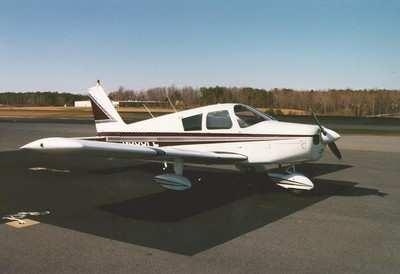Mon, Mar 09, 2020
Piper PA-28 Impacted Mountainous Terrain
The NTSB has released a preliminary report from an accident which occurred January 24 about 10 miles southwest of Payson Airport (KPAN), Payson, AZ. The Piper PA-28-140 (Cherokee) impacted mountainous terrain, and a post-impact fire ensued. One passenger on board the aircraft was fatally injured and the private pilot and another passenger sustained serious injuries.

Visual meteorological conditions prevailed, and no flight plan was filed for the cross-country flight that originated from KPAN at about 0900 local time.
The pilot stated in an interview that after a flight earlier that morning from Falcon Field Airport (KFFZ), Mesa, Arizona, he landed in PAN, refueled, and departed for the return flight back to KFFZ. During the return flight, the pilot decided to fly over the mountains southwest of their position. He stated that he flew about 1,000 ft above ground level (agl) over the mountains, while the passengers were spotting wildlife on the terrain below. The pilot stated the airplane was running well and doesn't remember anything else until waking up in a small creek at the accident site.
Preliminary flight track data showed the airplane depart KPAN and fly to the Mazatzal Mountain Range. While maintaining an altitude of about 1,000 ft agl above the mountainous terrain, the airplane made a 280° turning maneuver, then descended over a canyon. About a half mile from the accident site, the flight track turned left and the turn radius increased before the track data ceased. The last recorded flight track data point was located about 500 ft from the accident site and about 200 ft agl.
Examination of the accident site revealed the airplane impacted steep brush covered terrain. The wreckage including all major structural airplane components, and primary flight controls were contained within the debris field that was about 145 ft long and oriented on a magnetic heading of about 35°. The propeller was found about halfway through the debris field and the blades revealed leading edge gouging and loss of blade material at the tips. The main wreckage was found on top of rocks located along the stream. The cabin and forward fuselage were mostly consumed by postimpact fire. The left wing and empennage were found partially attached to the main wreckage and had postimpact fire damage.
The wreckage was recovered to a secure facility for further examination.
(Source: NTSB. Image from file. Not accident airplane)
More News
Terminal Radar Service Area Airspace surrounding designated airports wherein ATC provides radar vectoring, sequencing, and separation on a full-time basis for all IFR and participa>[...]
Aero Linx: Utah Back Country Pilots Association (UBCP) Through the sharing experiences, the UBCP has built upon a foundation of safe operating practices in some of the most challen>[...]
From 2010 (YouTube Edition): Imagine... Be The Change... Inspire FROM 2010: One of the more unusual phone calls I have ever received occurred a few years ago... from Anousheh Ansar>[...]
(Pilot) Felt A Shudder And Heard The Engine Sounding Differently, Followed By The Engine Chip Detector Light On April 14, 2025, about 1800 Pacific daylight time, a Bell 206B, N1667>[...]
Also: AMA Names Tyler Dobbs, More Falcon 9 Ops, Firefly Launch Unsuccessful, Autonomous F-16s The Air Force has begun ground testing a future uncrewed jet design in a milestone tow>[...]
 ANN's Daily Aero-Term (05.07.25): Terminal Radar Service Area
ANN's Daily Aero-Term (05.07.25): Terminal Radar Service Area ANN's Daily Aero-Linx (05.07.25)
ANN's Daily Aero-Linx (05.07.25) Classic Aero-TV: Anousheh Ansari -- The Woman Behind The Prize
Classic Aero-TV: Anousheh Ansari -- The Woman Behind The Prize NTSB Prelim: Bell 206B
NTSB Prelim: Bell 206B Airborne-NextGen 05.06.25: AF Uncrewed Fighters, Drones v Planes, Joby Crew Test
Airborne-NextGen 05.06.25: AF Uncrewed Fighters, Drones v Planes, Joby Crew Test



